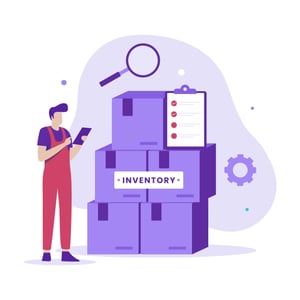Maintaining a diverse inventory is smart, but what happens when you find your business burdened with dead stock? And what is dead stock for that matter? Frequently dubbed “dead inventory” or “obsolete inventory,” dead stock refers to items that aren’t projected to sell. In inventory management, overproducing or overordering is bound to happen. So when it does, what do you do with your dead stock?
What is Dead Stock?
Let’s Take a Step Back for a Moment
Dead stock can occur not only when a company manufactures or orders an excess of inventory, but also when merchandise is damaged—whether it’s from incorrect deliveries or perishable items. Food supply chains, for instance, are highly complex, as perishables need to be optimally managed and kept within a temperature-controlled environment from production through storage and distribution. In addition to things like food spoilage, pharmaceuticals can also fall victim to becoming dead stock due to expiration or integrity loss.
To be clear: when we talk about dead stock, we aren’t solely referring to unanticipated events that take place overnight. It’s typically a lengthy process: often, goods are deemed slow-moving stock before they become dead stock. Items that have been in storage for more than a year can be considered dead stock, and could become a costly liability for your business.

Can Dead Stock Be Bad for Business?
There are several reasons why dead stock can negatively impact your business:
- Lost RevenueDead stock translates to forfeiting valuable revenue. The dollars you invest in manufacturing or purchasing stock typically yield a profit upon making a sale. However, when an item becomes obsolete, you have no way to earn a return on your investment, which can negatively impact your bottom line.
- Holding Costs Increased: Holding costs are the costs that go into storing items. The longer you store stock, the more money you’re putting in.
- Decreased Inventory Space. It should go without saying, when you have an item sitting on the shelf for an extended period of time, you lose that space. Not having enough space to store items that are actually going to turn over is just one of the reasons dead stock is bad for business.
What is the Cost of Dead Stock?
When you have dead stock, you have lost revenue. Having items become unsellable and losing out on shelf space translates to decreased revenue, increased employee wages, and reduced storage space. For example, if you have 100 items that each cost $100 and you can’t sell any of them, you’ve just lost $10,000 in sales.
What Causes Dead Stock?
No matter how great your business model is, you could find yourself burdened with dead stock. Luckily, there are ways to avoid these common mistakes.
- Inaccurate forecasting isn’t unavoidable: All businesses will probably face inaccurate forecasting from time to time.
- How do I avoid this? Businesses should always leverage data and analytics to evaluate purchasing data and forecast future trends. Doing this and incorporating economic conditions data will ensure your business develops a more accurate strategy for stocking inventory.
- Not ordering consistently: When you’re ordering too much at once or ordering products at the wrong time, this could lead to dead stock.
- How do I avoid this? One way to avoid this is by regularly tracking KPIs related to your business. A good KPI measures how long it takes to sell inventory and tracks the minimum inventory quantity before an item needs to be restocked.
- Poor sales and a drop in demand could be a reason for dead stock.
- How do I avoid this? Analyzing the reason for the poor sales and the decrease in demand is an effective method for determining whether or not you need to order less quantity of a particular product or stop offering it altogether.
What is Dead Stock and How Can I Reuse it?
Just because you have dead stock does not mean you are stuck with it. There are several ways to reuse these items as a strategy for mitigating total loss.
- Offer a free gift with purchase. Studies have shown that offering a gift with a purchase has inspired customers to want to buy more, as well as encouraged repeat purchases. So, while you’re not making anything on the item itself, you’re inspiring customer retention and loyalty. What’s more, you can require buyers to meet a minimum order threshold to qualify for free merchandise, and that free gift can entice potential customers into spending more than they originally planned.
- Bundling dead stock with similar items is known as kitting. By offering to sell the item at a lower rate than you would have normally sold it for, you’re still inspiring customers to purchase from you and you’re still making some profit off of it.
- Running a sale on dead stock items is another way to move obsolete inventory. People enjoy sales and when they see something at a discounted price, it motivates them more to purchase it – allowing you to recuperate some of the revenue that would’ve otherwise been lost on that inventory.
- Donating dead stock won’t help you recoup any financial loss, but it could mean a tax deduction and make a good impression on today’s socially conscious consumers. People will see your generosity and look to purchase more items from you in the future.
The Smart Difference: Eliminate Dead Stock for Good
At Smart Warehousing, we provide customized inventory management to uniquely meet the needs of each client – all with the goal of minimizing costs and maximizing revenue. With over 38 warehouses strategically placed in key markets across the U.S., we provide fulfillment solutions that are efficient, sustainable, and beneficial for your bottom line – from the moment an order is placed through its arrival on a customer’s doorstep.
To learn more about our innovative cloud-based technology and full range of service offerings, contact us today.


